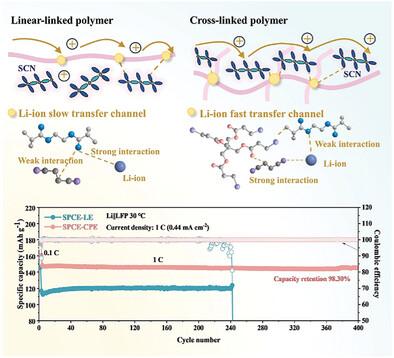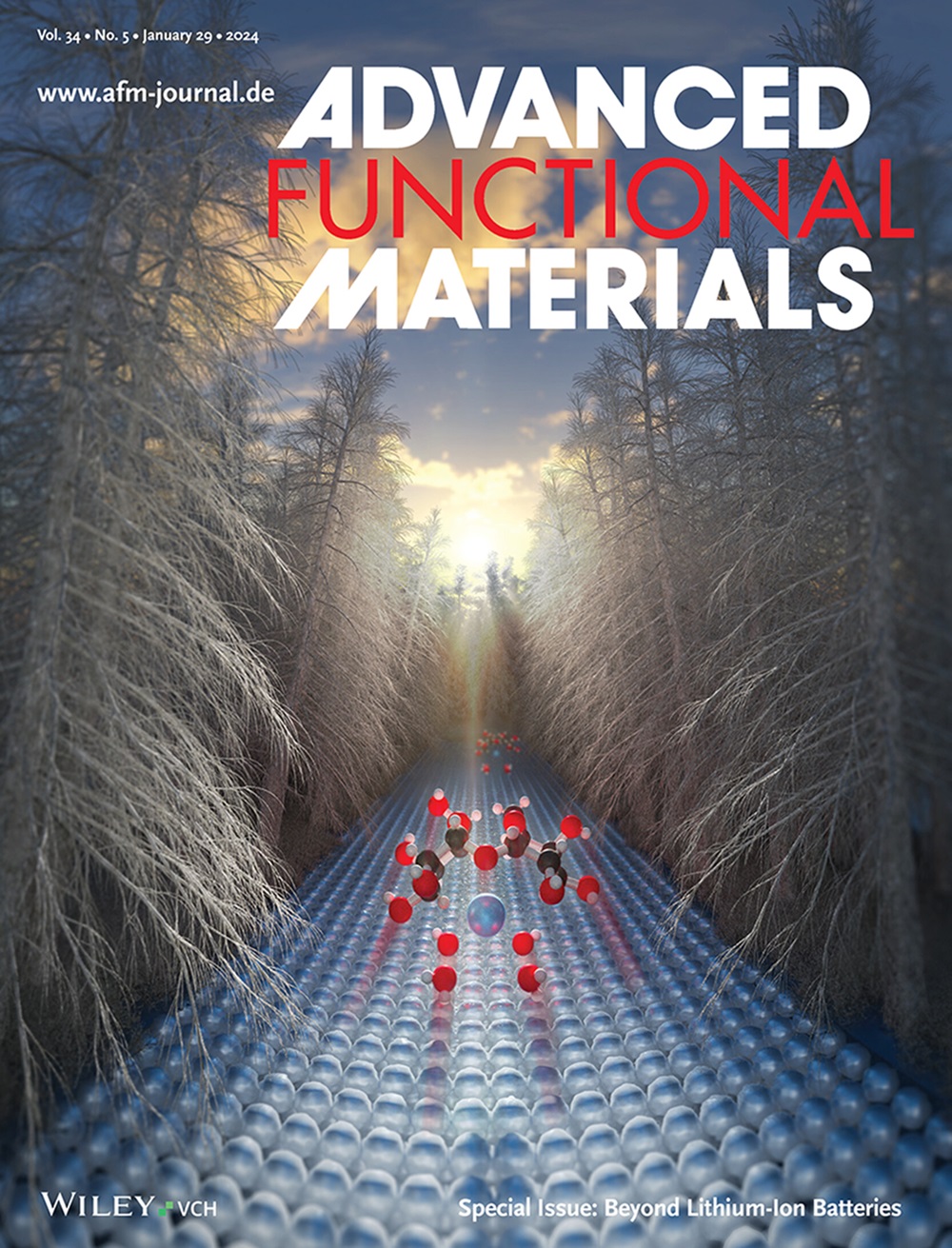Modulating the Li-Ion Transport Pathway of Succinonitrile-Based Plastic Crystalline Electrolytes for Solid-State Lithium Metal Batteries
IF 18.5
1区 材料科学
Q1 CHEMISTRY, MULTIDISCIPLINARY
引用次数: 0
Abstract
Succinonitrile (SCN) based plastic crystal electrolytes (SPCEs) have attracted much attention for lithium metal batteries due to their considerable ionic conductivity and thermal stability. Insufficient mechanical properties, weak reductive stability, and the presence of free SCN molecules can result in adverse interfacial reactions. Polymer introduction has been explored to address these challenges. However, the introduction of polymer affects the SCN state, leading to reduced ionic conductivity, potentially due to limited segmental motion of the polymer at room temperature. Herein, a cross-linked network polymer strategy is proposed to modify the Li-ion transport pathway in SPCE, aiming to significantly improve the ionic conductivity. The strong interaction between the polymer matrix and SCN enhances their mutual solubility, reduces the crystallinity of SCN, and forms a rapid conduction pathway (polymer—[SCN—Li+]). The ionic conductivity of SPCE increases to 1.28 mS cm−1, with the Li-ion migration number (tLi+ ) also rising to 0.7. Electrochemical performances in Li symmetrical, Li||LiFePO4 and Li||LiNi0.8Co0.1Mn0.1O2 cells show significant improvement at both room temperature and 0 °C. These findings suggest that designing polymer network structures in SPCEs holds promise for solid-state lithium metal battery applications.

调节用于固态锂金属电池的琥珀腈基塑料晶体电解质的锂离子传输途径
基于丁二腈(SCN)的塑料晶体电解质(SPCE)因其可观的离子传导性和热稳定性而在锂金属电池领域备受关注。不足的机械性能、较弱的还原稳定性以及游离 SCN 分子的存在会导致不良的界面反应。为了应对这些挑战,人们开始探索引入聚合物。然而,聚合物的引入会影响 SCN 状态,导致离子传导性降低,这可能是由于聚合物在室温下的分段运动有限。本文提出了一种交联网络聚合物策略,以改变 SPCE 中的锂离子传输途径,从而显著提高离子电导率。聚合物基体与 SCN 之间的强相互作用增强了它们的互溶性,降低了 SCN 的结晶度,并形成了一条快速传导途径(聚合物-[SCN-Li+])。SPCE 的离子电导率上升到 1.28 mS cm-1,锂离子迁移数(tLi+)也上升到 0.7。锂对称电池、Li||LiFePO4 电池和 Li||LiNi0.8Co0.1Mn0.1O2 电池在室温和 0 °C 下的电化学性能都有显著改善。这些发现表明,在 SPCE 中设计聚合物网络结构为固态锂金属电池的应用带来了希望。
本文章由计算机程序翻译,如有差异,请以英文原文为准。
求助全文
约1分钟内获得全文
求助全文
来源期刊

Advanced Functional Materials
工程技术-材料科学:综合
CiteScore
29.50
自引率
4.20%
发文量
2086
审稿时长
2.1 months
期刊介绍:
Firmly established as a top-tier materials science journal, Advanced Functional Materials reports breakthrough research in all aspects of materials science, including nanotechnology, chemistry, physics, and biology every week.
Advanced Functional Materials is known for its rapid and fair peer review, quality content, and high impact, making it the first choice of the international materials science community.
文献相关原料
| 公司名称 | 产品信息 | 采购帮参考价格 |
|---|
 求助内容:
求助内容: 应助结果提醒方式:
应助结果提醒方式:


